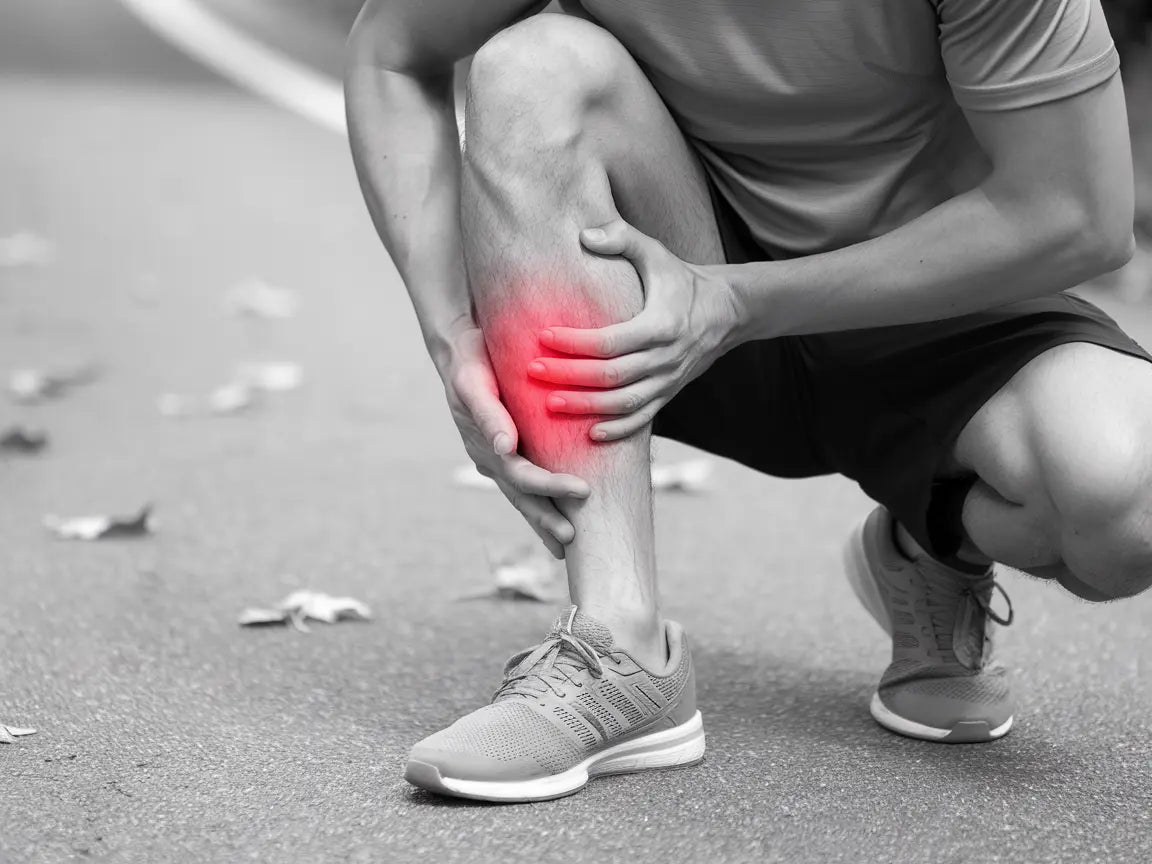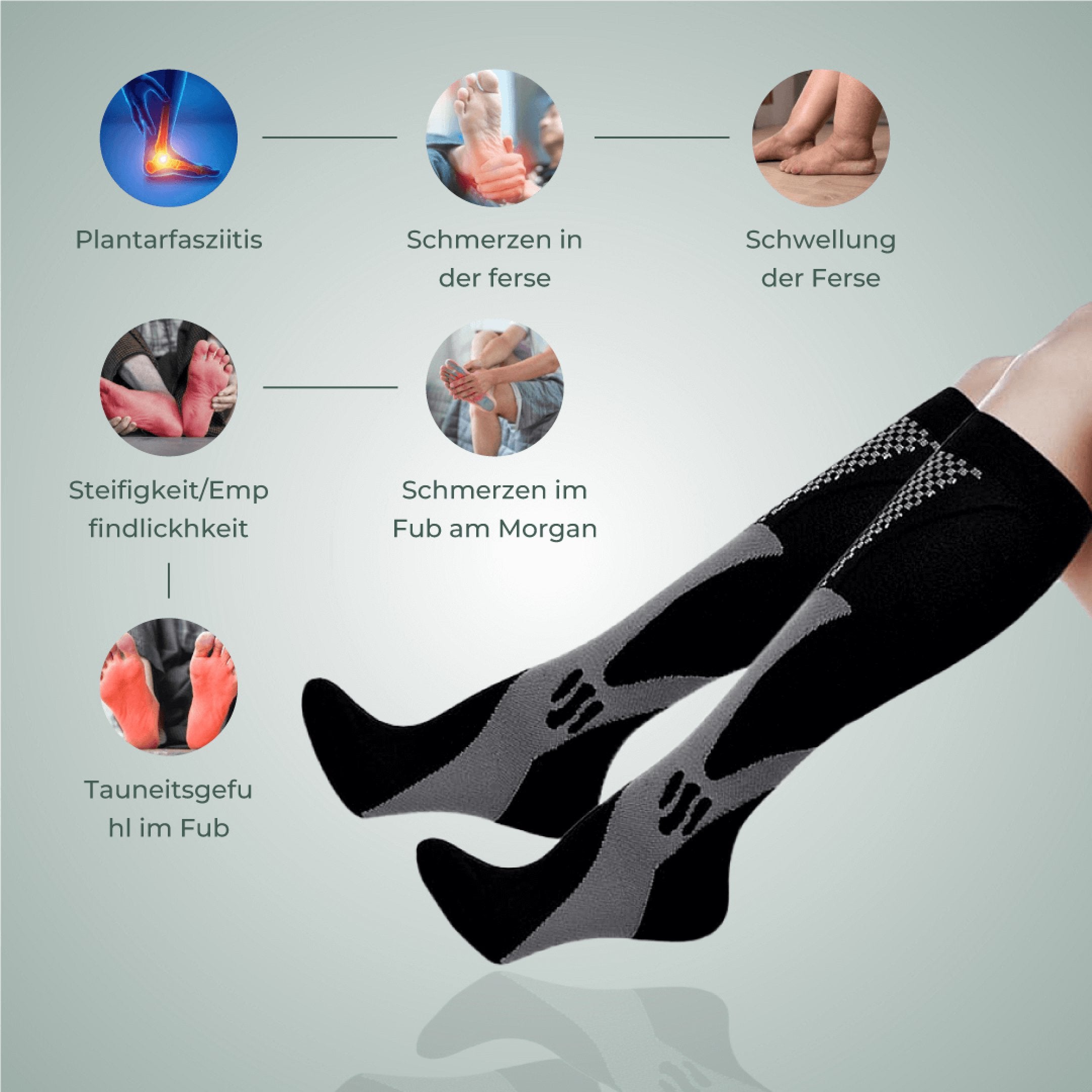Benhinneinflammation: Symptoms, Causes, and Treatment

Shin splints is a common overuse injury that often affects runners and other athletes. This article covers the most common symptoms, causes, and treatment options for shin splints.
What is Shin Splints?
Shin splints, also known as compartment syndrome or medial tibial stress syndrome, is a painful condition that occurs when the muscles in the lower leg swell and cause pressure on the periosteum, which is the thin tissue that surrounds the shinbone (tibia). This condition often affects athletes who subject their legs to repeated stress. Inflammation occurs when the periosteum that attaches muscles to the shinbone becomes irritated, resulting in pain and discomfort along the shin. Medical treatment is often necessary to relieve symptoms and address the underlying cause of the problem.
Symptoms of Shin Splints
Common symptoms include:
- Pain on the inside or front of the lower leg
- Tenderness when touching the affected area
- Swelling in the lower leg
- Tightness or tension in the calf muscles
- Pain that worsens with activity and decreases with rest
Symptoms of shin splints can vary in intensity depending on the extent of overuse. Typically, the condition is characterized by a dull ache that worsens when putting weight on the lower leg. Shin splints most often occur along the inside of the shinbone (tibia) but can also be present at the front of the lower leg. In more severe cases, pain may persist even at rest. Many runners find that pain often begins after activity and can worsen over time to be present throughout their running session.
Causes of Shin Splints
Several factors can contribute to developing shin splints:
- Overuse from intense running or jumping
- Poor running technique
- The structure of foot arches (flat or high arches)
- Change in surface or type of shoes
- Muscle imbalance in the lower legs
The cause of shin splints may relate to various factors concerning foot biomechanics. Individuals who pronate (inward rotation of the foot) or have flat feet or pronounced high arches are at greater risk for developing this condition. An overloaded arch can lead to tendons and muscles in the lower leg working harder, increasing inflammation risk. Overexertion from rapid training increases or hard running on hard surfaces that send shocks through bones and skin are also common causes. Calf muscle hypertrophy (enlarged calf muscle) can also contribute to increased strain on the shinbone.
Diagnosis and Treatment of Shin Splints
| Behandlingsmetod | Beskrivning | Fördelar med kompressionsstrumpor |
|---|---|---|
| Vila och avlastning | Minska belastningen på underbenen | Ger stöd och minskar svullnad |
| Is och kylbehandling | Minskar inflammation och smärta | Förbättrar blodcirkulationen |
| Fysioterapi | Stärkande övningar och stretching | Hjälper till att förebygga återfall |
| Stötvågsbehandling | Stimulerar läkning i vävnaden | Kan användas tillsammans för ökad effekt |
| Kompressionsstrumpor | Ger stöd och förbättrar cirkulation | Minskar muskelvibrationer och trötthet |

How Compression Socks Can Help with Shin Splints
Compression socks from Komforten offer several benefits for individuals with shin splints:
- Improves blood circulation in the lower legs
- Reduces swelling and inflammation
- Provides support to the muscles and reduces vibrations during activity
- Can accelerate recovery and decrease the risk of recurrence
- Available in different compression classes to suit various needs
Treatment for shin splints with compression socks can be particularly effective as the socks provide dynamic support and even pressure across the muscles in the lower leg, helping to stabilize the muscle groups that stress the shinbone. This allows for more pain-free movement and can be especially useful for athletes who want to continue training during recovery, as the socks support both tibia and fibula even during activity. The compression socks are convenient to use and can be worn under regular socks.
Buy nowConclusion
Shin splints is a painful condition that requires the right diagnosis and treatment for effective healing. By combining rest, appropriate treatment, and the use of supportive aids such as compression socks, most individuals can recover well from shin splints. It is important to listen to your body and gradually return to activity to avoid relapse. Learn more about how you can receive advice at our clinic if you are experiencing pain on the front or inside of your lower leg.
Frequently Asked Questions (FAQ)
How long does it take to recover from shin splints?
Recovery time varies, but it can take from a few weeks to several months depending on the severity of the injury and the treatment.
Can I continue to train with shin splints?
It is usually best to rest from activities that worsen the pain, but alternative exercises that do not strain the lower legs can often be performed.
How do I use compression socks for shin splints?
Use the socks during activity and recovery. For best results, follow the manufacturer's recommendations for use and care.
Can shin splints be prevented?
Yes, by gradually increasing the training intensity, using appropriate shoes, varying the training surfaces, and including strength training for the lower legs, the risk can be reduced.
When should I seek medical care for shin splints?
If the pain is persistent, worsens over time, or if self-care does not lead to improvement within a few weeks, you should consult a doctor or physiotherapist.
